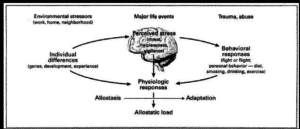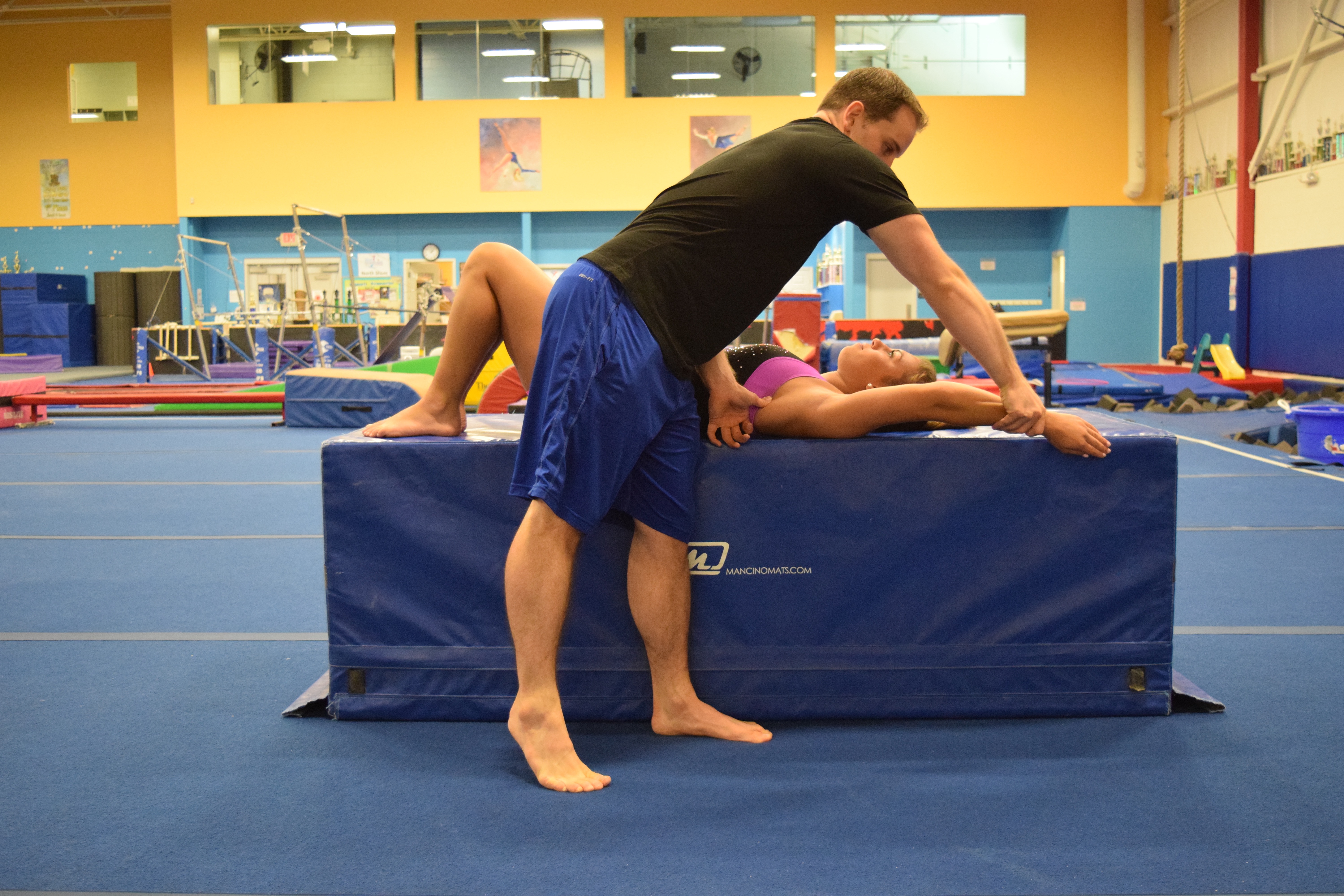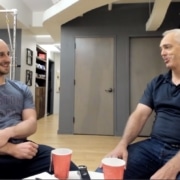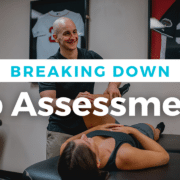Brain Spill #5: Stress Neuroendocrinology, Physical Therapy, Epigenetics, and Youth Athletes:
My blog posts in the last few months have been on the “meta” side of the fence, talking about things like overcoming failure, coaching style, and life psychology. I’m ready to dive into the wild nerdy rabbit hole again in a “Brain Spill” type post. The same format will apply, just a whole bunch of bullet points on research, intersectional thoughts from different textbooks, and some practical points on how it applies to the medical and sports.
My life in continuing education has focused on a freight train type approach to learning about stress neuroendocrinology, epigenetics, cognitive psychology, and how the concepts of allostatic load theory (more below but the progression of the homeostasis model) influence Physical Therapy as well as youth athletics. Here are some textbooks I’ve been reading for those interested, and there are lots of links to research below.
- Stress: Concepts, Cognition, Emotion, and Behavior: Handbook of Stress Series Volume 1 (Handbook in Stress) 1st Edition, Fink
- Stress: Neuroendocrinology and Neurobiology: Handbook of Stress Series, Volume 2 1st Edition, Fink
- Allostasis, Homeostasis, and the Costs of Physiological Adaptation Reprint Edition, Schulk
- Why Zebras Don’t Get Ulcers. Sapolsky
- Sport, Recovery, and Performance: Interdisciplinary Insights, Kellman and Beckman
- Epigenetics, Second Edition 2nd Edition, Allis et al
- Progressions in Molecular Biology and Translational Science: Mechanotransduction, Volume 126 1st Edition, Ingber
- Behave: The Biology of Humans at Our Best and Worst, Sapolsky
- The Polyvagal Theory: Neurophysiological Foundations of Emotions, Attachment, Communication, and Self-regulation (Norton Series on Interpersonal Neurobiology) 1st Edition, Porges
Here goes nothing.
Table of Contents
Basics of Stress Neuroendocrinology, and Why it Matters for Physical Therapy / Youth Sports
- Stress, mobilization of the stress response, and our bodies adaptations to stress (good and bad) are all based on generations of evolution. It’s based on prioritizing species survival and handling real or perceived threats. Perceived threats are a tricky but important conceptual concept, as everyone has a different interpretation of a “threat”. One person may thrive on being the center of attention, where another person may start dry heaving and having a panic attack when they have to speak publically. Sprinting a sub 6-minute mile may be the best part of one athlete’s training, whereas for a power based athlete who loves heavy lifting, the thought of sprinting a mile makes them actually worry their lungs are going to collapse. It’s all about perception.
- Fundamental pieces of our stress response have evolved from thousands of years. Our brain neurochemistry, neuroarchitecture, and endocrine physiology date back to much more primitive times. Times where the biggest threats that mobilized our stress response were not getting eaten by tigers and deciding if those odd colored berries would poison us, not how many likes we got on Instagram or fears that Brad the cute guy in the marketing department saw you walk into a revolving door this morning. (more research here and here).
- Stress neuroendocrinology research outlines a few really interesting and unique aspects of the human stress response compared to other species. These adaptations kept us feisty in the animal kingdom and higher in the “let’s not get eaten today” food chain.
- #1 – Due to the way our brains detect real or perceived threats, a variety of different types of stressors (physical, metabolic, mental, emotional, and social) all draw upon similar responses and energy resources to handle a challenge.
- A lot of the energy for managing challenges comes from glucose and oxygen to fuel the brain as well as muscles, cellular level anaerobic glycolysis for tissue energy, and other micronutrients based substrates to fuel bioenergetic reactions. (more research here)
- In short, you doing a 5×10 back squat at 80%, you realizing Brad actually did see you walk into the door despite your best efforts to “dance it out”, and you having to give an hour presentation in front of your entire company essentially pull from the same metaphorical “stress fuel” bank account (shout out Jay Leydon for this analogy). Both 50 back squats and trying to catch Brad’s eye makes your heart rate increase, breathing rate increase, your level of alertness rise, and cause your body to flood with glucocorticoids in an effort to mobilize glucose for fuel.

- #2 – Due to our evolutionary background, the human stress response is optimally designed for acute, short duration stressors (quickly detect and run from the tiger, realize these berries are poisonous and throw them up ASAP).
-
- This design of our stress system is engineered to rapidly detect real or perceived threats, deal with them through a sympathetic drive, and then return to our calmer baseline through a parasympathetic drive.
- In our modern world, this means: gather the gusto to struggle through your back squats or presentation, make it out alive, and then once it’s over relax on the couch watching the season finale of Peeky Blinders while food and rest replenish your body. This is the overall concept of allostasis and periodization cycling and is at the foundation of human adaptation. Just keep in mind this principle refers to physical, metabolic, mental, intellectual and emotional stressors alike.
- As massive amounts of research suggest, acute and short-term stressors like exercise or studying can be very beneficial to our health. Chronic hyperactivation or over-activation of our stress system, however, can have very toxic effects on our bodies. (more research here, here, here, and here).
- This is where the emerging concept of “allostasis” has emerged, building off of the “homeostasis” model for adaptation. Here is a short description, (more on allostasis here)
- “Allostasis – Homeostasis, “stability through constancy” is maintained by a self-limiting process involving negative feedback control by the output variable, which in the case of the HPA, is the secretion of adrenal glucocorticoids. The limits of feedback control are set by a notional regulatory “set point.”31 Sterling and Eyer81 introduced the term Allostasis, “stability through change” brought about by central nervous regulation of the set points that adjust physiological parameters in anticipation to meet the stress/challenge. McE- wen82 integrated the concept of allostasis to describe the adaptation process of the organism in the face of different stressors and different circumstances. That is, allostasis incorporates circadian, circannual, and other life-history changes that might affect the animal’s “internal balance.”
- Back to the bank account analogy, if you take some money out of the bank for essential things like paying a plumber to fix your pipes exploding in the basement, and then put money back in to replace it, and all is good in the world. But, haphazardly keep drawing out money repeatedly for nights out on the town, extra lives in HQ Trivia, and a cute sweater for your cat without looking at your bottom line, and you’re gonna be in trouble when your car needs a new starter and you overdraw your bank account. This is thought to occur because, after a certain point, the act of constantly mobilizing a stress response may become more dangerous to the body than the stressor itself. (more research here, and here)
- This design of our stress system is engineered to rapidly detect real or perceived threats, deal with them through a sympathetic drive, and then return to our calmer baseline through a parasympathetic drive.
-
Building off of this, a lot of research also outlines this “acute and beneficial” vs “chronic and negative” trade-off. Some examples within specific body systems include
-
Musculoskelatal and Metabolic
- Acute and Positive – Wolff’s law and cellular histology studies of focal adhesions, cytoskeletal matrix, mechanotransduction, and mTOR pathways outline the positive effects of appropriate physical tissue loading, metabolic strain, and neural motor unit adaptations when the correct dosage of work follows the correct dosage of recovery. (more research here, here, here, here and here).
- Aka, our legs may feel like Bambi on thin ice after the first day of 5 x 10 back squats. But, if we stick to our guns, 6 weeks later when using the same weight, not so much. This is commonly referred to as functional overreaching or allostatic load.
- Chronic and Negative – This is the most commonly known effect of excessive stress in one bout or overtime for the medical and sports performance world. Tissue overload and high metabolic strain can lead to breakdown, inflammatory cascades, and injury (more research here, here, here and here).
- Aka, try to be a hero and go 20 lbs over what your back squat program says to impress the girl who’s squatting as much as you in the next rack over, and your back might not feel so hot after. Train 14 days in a row without respecting recovery or concepts of periodization and your back might may also not feel so hot over time. This is commonly referred to as nonfunctional overreaching or allostatic overload.
- Acute and Positive – Wolff’s law and cellular histology studies of focal adhesions, cytoskeletal matrix, mechanotransduction, and mTOR pathways outline the positive effects of appropriate physical tissue loading, metabolic strain, and neural motor unit adaptations when the correct dosage of work follows the correct dosage of recovery. (more research here, here, here, here and here).
-
Gastrointestinal
- Acute and Positive – When sympathetic drive sets in, the body shunts blood away from the gut to supply fuel to working muscles, and temporarily suspends nutrient absorption or energy storage. Glucose is mobilized to fuel anaerobic glycolysis, glucose and fatty acids are used in aerobic metabolism, and the shift in blood flow allows better oxygen/carbon dioxide transportation. This is very important for properly managing stressors from a nutritional point of view. (more research here and here).
- Very good to have if you want to crush a wedding dance floor for 2 hours without blacking out (from fatigue), or beat your trash talking friends in a pickup soccer game.
- Chronic and Negative – When you are constantly mobilizing sympathetic drive, the gut doesn’t get the blood flow and energy resources it needs for the highly expensive process of intestinal muscles working to break down food. Yes, ironically the process of breaking down food for energy takes a lot of energy. If chronic stress causes no gut blood flow and macronutrient absorption to occur, as a result there may be limited replenishment of lost energy, absorption of nutrients or water, and adaptation to training. This can be a big-time problem. (more research here, here, and here)
- Allostatic overload may set in as you keep overdrawing your bank account, and never have a safety net of money in case of emergency. On a serious note, when looking at youth athletics this is not a good thing. Many young athletes already have very questionable nutritional advice from mainstream media, have ridiculous body image hate coming their way on social media (especially females), and may already be significantly overtrained. Throwing another nutritional wrench in the gears like limited nutrient absorption from chronic stress may contribute to serious issues related to body image and things like the Female Athlete Triad or RED – S syndrome. (more research here)
- Acute and Positive – When sympathetic drive sets in, the body shunts blood away from the gut to supply fuel to working muscles, and temporarily suspends nutrient absorption or energy storage. Glucose is mobilized to fuel anaerobic glycolysis, glucose and fatty acids are used in aerobic metabolism, and the shift in blood flow allows better oxygen/carbon dioxide transportation. This is very important for properly managing stressors from a nutritional point of view. (more research here and here).
-
Growth and Development
- Acute and Positive – In line with the sections above, properly used periodization cycles, combined with nutritional and other recovery strategies can positively skyrocket growth and development (more here and here). Proper training and stressor dosages has been very supported in literature for physical, metabolic, sports performance, and health success. (more research here and here)
- Chronic and Negative – Also in line with the two sections above, chronic musculoskeletal or metabolic loading + no macronutrient and caloric absorption in the gut may = no ability to repair damaged tissue, grow new tissue, or adapt to stressors.
- In most settings, I think this manifests as snowballing overuse injuries, aka stress fractures and growth plate apophysitis in youth athletes, or stalled progress in your quest to see strong results from being on the Gain Train. On another serious note, this again is not a good situation to see occurring as early sports specialization, year-round training, and early college recruiting is demolishing youth athletes with the highest injury and burnout rates ever seen. (more research here, here , here, and here)
-
Immunological
- Acute and Positive – Contrary to popular belief, acute stressors actually tend to have a positive effect on immune function. The thought for this is that boosting the immune system in the short term helps to prepare the body to manage incoming bacterial threats and enhance macrophage function to clean up tissue debris. (more research here)
- Chronic and Negative – As the common theme shows, this effect of stress on immunological function tends to reverse as stress becomes more chronic. The immune system starts to become exhausted, is unable to maintain it’s ability to manage illness threats. As a result, the immune system can “hit the floor” as Dr. Robert Sapolsky says. (more research here, here, and here),
- Cue athletes getting sick all the time mid-season when midterms are going on, or you having weekly bouts of a cold when your training program is crushing you or you are not taking care of yourself.
-
Memory and Learning Capacity
- Acute and Positive – In a super interesting twist, acute stressors appear to be beneficial to memory formation and learning abilities. It is thought that the amygdala and limbic system can help “emotionally tag” relevant important experiences to better store them as valuable memories for the future. Attentional focuses also appear to increase through increased activity in the locus coerulus, and the hippocampus (crucial to memory formation) can show upregulated long-term potentiation under appropriate stress. (more research here, here, and here).
- This makes sense when you think about the attentional focus needed to master barbell Snatching, studying complex material, or focusing really hard to remember some cute girls number after noticing your phone died.
- Chronic and Negative – In a super terrifying twist, stress neuroendocrinology research has brought to light some not so great effects that chronic stress may have on cognitive function, memory capacity, executive thinking abilities, and neuroplastic cortex potential in the pre frontal cortex neurons. (more research here, here, and here ).
- In someone who is always worried about what people think of them, who is constantly fighting with family members, or perceives huge social pressure, their amygdala tends to drive the bus. This makes it hard for the same prefrontal cortex focus, logic, rationality, attention, and concentration needed in learning or memory formation.
- The neural signature of this is thought to be from chronic glucocorticoid flooding in the body causing Mineralocorticoid Receptor/Glucocorticoid Receptor saturation. This may possibly lead to changes in brain regions that negatively affecting the ability to modulate the magnitued and duration of stress response activation. (more research here)
- It’s really hard to focus on barbell snatching when you have massive anxiety that your competition is a week away and you can’t hit your lifts, and it’s really hard to remember that girls number when you realize you left your wallet at the restaurant last night.
- Acute and Positive – In a super interesting twist, acute stressors appear to be beneficial to memory formation and learning abilities. It is thought that the amygdala and limbic system can help “emotionally tag” relevant important experiences to better store them as valuable memories for the future. Attentional focuses also appear to increase through increased activity in the locus coerulus, and the hippocampus (crucial to memory formation) can show upregulated long-term potentiation under appropriate stress. (more research here, here, and here).
-
Psychosocial Mental Health and Emotional Regulation
- Acute and Positive – The amygdala serves as a key brain structure for fear detection and fear conditioning. The prefrontal cortex is our logic and rational thought brain structure. They are in a constant dance, with the amygdala trying to induce fear responses for threats, where the prefrontal cortex and other brain areas are trying to make sense of it all.
- Again, very helpful for our survival to remember locations where predators were, to remember that color of berry is not what we should eat, or that the stove is really hot and will burn us if we touch it.
-
By teaching coping strategies, how to reframe stressors, using relaxing techniques, or other methods that promote central control, the prefrontal cortex can help control the amygdala going wild, and as a result, modulate the stress response (more research here). The proper dosage of stressor paired with the right strategies may help build the prefrontal cortex’s ability to prevent amygdalar hijacking (and modulate the HPA axis for the stress response).This tends to be at the root of many cognitive behavioral therapies.
-
You gave that hour presentation once and didn’t die because you were prepared and used some breathing techniques, so this one is going to go just fine. The mental win over your 5×10 back squat despite Bambi legs makes you feel like a boss the next time you approach similar workouts.
-
-
- Again, very helpful for our survival to remember locations where predators were, to remember that color of berry is not what we should eat, or that the stove is really hot and will burn us if we touch it.
- Chronic and Negative – Inappropriate dosage of stressors does the opposite. This is where your amygdala may take the reigns, and makes you think about the absolute worst case scenario. You get buried by paralyzing fear every time you have to speak to anyone but your diary. This may be a major player for young athletes with wild anxiety, catastrophizing, and panic for sports performance (more research here, here, and here). It also may drive wild fears of injury or reinjury in athletes, as pain science has conceptualized (more research here)
- An athlete catastrophizing competing as “I totally blew it once competing in this gym, which means I’m pretty must destined for failure again. I should just quit now and save myself the embarrassment, maybe I’ll just play chess competitively instead.” Or, a patient following the worst case scenario saying “I can’t deadlift because every time I do I hurt my back. I don’t want to blow a disc, not be able to work, and not be able to provide for my family”
- Acute and Positive – The amygdala serves as a key brain structure for fear detection and fear conditioning. The prefrontal cortex is our logic and rational thought brain structure. They are in a constant dance, with the amygdala trying to induce fear responses for threats, where the prefrontal cortex and other brain areas are trying to make sense of it all.
-
-
- Interestingly enough, our body has a built-in emergency brake to prevent the toxic effects of glucocorticoids and other stress hormones on the brain and body. Glucocorticoids have a negative feedback loop to many areas of the brain (mainly prefrontal cortex, hippocampus, amygdala) through mineralocorticoid and glucocorticoid receptors. Negative feedback loops mean that the more of substance detected (cortisol to receptors) the reduction in the output (stress response mobilization). It helps automatically keep the checks and balances in place (more research here, here, and here). These help your body from flooding itself with stress hormones that can cause excess wear and tear over time.
-
-
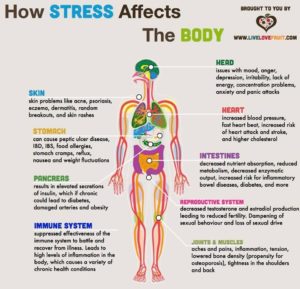
http://www.lifeinsymmetry.com/blog/2015/7/27/the-effects-of-stress-the-body
- #3 – Most incredible of all, because humans being are a species dependent on social interactions and intelligence for survival, a crazy part to us is that we possess the ability to voluntarily mobilize the stress response with our thoughts. Over many generations, we developed a neocortex (mainly the prefrontal cortex) to engage in complex reasoning and executive function.
- This is why we can think about our thoughts on thinking. This adaptation allowed us the unique ability to reflect on past stressors, more accurately perceive stress responses needed for threat, or use creativity and imagination to construct future threats.
- This was great in terms of survival back in the day as we weren’t nearly as fast or strong as other animals. In our current Westernized society, this factor to our brain and stress response tends to be at the foundation of many chronic stress-related pathologies. Many people, from youth athletes to regular adults to professional athletes, ruminate on past stressors or create illusionary future stressors that haven’t happened yet.
- This not only sparks massive mental chaos, but due to the integral link between executive brain function neurocircuitry and multi physiological systems, these thoughts can mobilize very real stress responses in the body. The world of pain science again has brought this to light with the concepts of neurotags. (more research here).
- The chronic stress that comes every day when someone worries about getting financially crushed next month in taxes, an athlete fearing they may totally bomb in a championship game, or someone ruminating on losing a season to injury can all mobilize a massive stress response both physiologically and psychologically.
- #3 – Most incredible of all, because humans being are a species dependent on social interactions and intelligence for survival, a crazy part to us is that we possess the ability to voluntarily mobilize the stress response with our thoughts. Over many generations, we developed a neocortex (mainly the prefrontal cortex) to engage in complex reasoning and executive function.
I know there is a lot of geeky stuff in there, but you want to read more about this be sure to check out the resource section at the end of the chapter.
.
It’s Gonna Get Weirder: How Epigenetics and Neuroplasticity of Chronic Stress May Massively Impact Physical Therapy and Youth Athletes
Now more than ever, the field of Physical Therapy is expanding to be way more involved in strength and conditioning, sports performance, psychology, and working as part of an interdisciplinary team.
Anyone working in sports or orthopedic PT, especially on a higher level related to performance, finds themselves way more involved than just rehabbing an injury. We become consultants, psychologists to athletes or parents, negotiators to coaches, and sometimes middlemen with surgeons.
For that reason and based on everything above, there are some wild places my brain has been going after reading the research on stress neuroendocrinology and epigenetics. Some of these thoughts swimming in my head include,
- New research on stress has outlined some insane concepts related to epigenetics, which is “the now popular way to describe gene-environment interactions via molecular mechanisms that do not change the genetic code but rather activate, repress, and modulate expression of the code. (more research here). The main mechanisms for epigenetics include histone modification, DNA methylation, and posttranscriptional regulation by noncoding RNAs (microRNAs or miRNAs) (more research here, here, and here).
- The heavy back squats create high mechanical and metabolic strain, which the body realizes it needs to adopt to for future efforts. Through mechanotransduction, the physical strain and force travels through the extracellualr matrix, which then gets transduced into a chemical signal within the cellular environment. The end result may be increased expression of genes for protein synthesis, osteoblastic turnover in bones, myoblastic stem cells, or collagen expression (more research here and here)
- The older viewpoint of “biology as destiny” has now progressed rapidly to the realization that gene expression can be up-regulated, down-regulated, and modulated within days, weeks, or months. More importantly, the effects of early life stressors or chronic stressors may last years if not dealt with. (more research here).
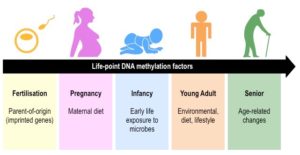
http://ib.bioninja.com.au/higher-level/topic-7-nucleic-acids/72-transcription-and-gene/epigenetics.html
- Dysregulation of the stress response and the growing influence of epigenetic mechanisms is moving to the forefront of many conversations for issues that plague people. I feel issues like overuse injury, anxiety, depression susceptibility, and burnout all have foundational roots in epigenetic as well as neuroplastic changes from chronic stress on the body. (more research here, here and here).
- Its common to hear about soldiers returning from war with post-traumatic stress disorder or children who have grown up in hostile homes that have huge mental health problems. They may have structural brain changes due to the upregulation of genes that produce more receptors to stress hormones, creating hyperresponsive stress recruitment (more research here). The same parallel may exist for other spectrums of trauma, like young athletes getting cyberbullied on social media or years of their coaches/parents yelling at them.
- If we are getting real weird, I do think that the effects of manual therapy, rehabilitation exercises, and strength programming all impact the neuromuscular system through unknown epigenetic mechanisms. The things we every day in the medical or sports performance world have their mechanisms somewhere in the weeds of stress epigenetics research. Cheers to the future.
- Think about the growing evidence for metabolic pathways of blood flow restrcition training, IASTM causing collagen changes through mechanotransduction, or periodized rehabilitation changing reflex thresholds.
- The effects of gene regulation can have baffling effects on neuroarchitecture, neurochemistry, brain network function, and as a result our daily behavior. Remember that human stressors come in physical, emotional, and mental flavors. They can all recruit the same stress response as running from a tiger. Different neural signatures seem to exist based on the stressor context, but the principles are essentially the same.
- With this in mind, new innovative connections in research are emerging between the role that social interactions (coaches and athletes, medical providers and patients, strength coaches and clients) training workloads, mental or emotional stressors, epigenetics, and psychological perceptions play on the chronic recruitment of the stress response. This means that basic factors such as coaching style, teaching a growth mindset, a locus of control, coping strategies, and social support may play a massive role in regulating the toxic effects of chronically activating the stress response. (more research here and here)
- Teaching an athlete to do diaphragmatic breathing before a race can calm their body down, teaching a person to journal about their rates/times of back pain felt can give them a sense of control
- What is crazy to me from reading this research is that factors that cause cumulative allostatic burdens that seem unrelated like having limited financial resources, being in a toxic environment, negative life events, and social stressors may have direct effects on chronic stress activation that then may lead to epigenetically regulated gene expressions based on experience.
- Bringing that concept back down to earth, think about the crazy parent screaming at their kid from the stands, peers hating on an athlete in social media, training in a toxic environment where coaches lead through fear and not trust may have very serious consequences.
- The cumulative allostatic burden of this may literally impact gene expression, neurochemical markers, neuroarchitectural changes in the brain, and behavioral outputs of kids.
- As posttraumatic stress research outlines, this may wildly impact mental health, physical health, and long-term cognitive abilities. If that doesn’t make you think twice about considering your daily actions or words with young athletes, I don’t know what will. As outlined by Zannas et al,“Acting epigenetically, hormones associated with stress protect the body in the short run and promote adaptation (allostasis), but, in the long run, the burden of chronic stress causes changes in the brain and body that lead to cumulative change such as accumulation of body fat (allostatic load) or diseases such as diabetes or cardiovascular disease (allostatic overload). Brain circuits are plastic and appear to be continuously remodeled by stress, as well as by other experiences, so as to change the balance between anxiety, self-regulatory behaviors including mood control and impulsivity, memory, and decision making” (read more here)
When you take a large step back and consider physical therapy, strength and conditioning, and sports performance, it all centers on stress neuroendocrinology.
- In the medical setting, we are dealing with a simple equation of excessive stress on tissues that were not able to handle it. This could result from overdosing, under-recovering, lack of objective monitoring, and more. Through education, exercise, and manual therapy, we are attempting to properly dose stress to the body. This comes in the forms of physical stress, metabolic stress, cognitive stress, or neuroplastic stress. Not to mention consultations about when to play after injury how much to train, and so on with parents or athletes. What we say and how we plan for rehabilitation from physical and psychological aspects directly affect these tissues via stress physiology.
- In the strength and conditioning or sports training setting, we are attempting to properly dose stress. This is maybe to enhance general fitness, acquire motor skills, build resilience or durability, or enhance performance. It still falls into the baseline category of optimal dose and recovers to foster adaptation.
- In the sports coaching setting, all we do on a daily basis is help develop and promote athlete development. The combination of psychological, physical preparation, technical sports skill development, and long-term athletic development have these concepts of stress physiology and allostasis at their foundation.
This is all nothing new, as it serves as the backbone to all we do in our fields. However, I think there is much, much more to these concepts when considering all the research above. The impact that I think it has is astounding when you look at the epigenetic, neuroplastic, and bioplastic long-term effects of stress epigenetics physiology.
- There is a possibility of directly undermining athletic performance with activation of stress response through
- Cognitive aspects of dictatorship type leading style, unrealistic workloads, toxic cultures or training environments tipping allostatic overload may directly increase injury risk with same aspects as chronic glucocorticoid flooding impair healing and tissue regeneration
- The same things may cause a reduced state of recovery where tissue can not remodel optimally, there is an inability to restore osteoblastic function to bones (stress fracture), and lack of restoration of energetic systems substrates used in anaerobic/aerobic fitness requirements. (more research here and here)
- The loss of negative feedback loops from chronic stress may create epigenetic changes in DNA expression through altered transcription of GR / MR receptors, loss of medial prefrontal cortex control of amygdala for the rational thought process. This can cause spirals and can create massive anxiety, fear, and depression. This is clearly important for the general population, but wildly important in elite athletes for coping, social support, autonomy, and sense of control. When playing well means income for your family or paying for college, there’s is a different level of stress going on.
- Gymnasts getting “mental blocks” on skills they got hurt on, or a football player being unable to shake the fear or reinjury when returning to full contact after his ACL tear
- Epigenetic changes produce very real negative effects of psychological activation of HPA / ANS creating impaired tissue resiliency (tendon and bone). It may also create lack of recovery via the parasympathetic system creating hypoxic or acidic body environment that causes blunted mechanotransductive effects to receive exercise stimulus in rehab/S&C/ sports training.
- The possibility of toxic training environments and nonoptimal dosage of stress in youth athletics causing very scary epigenetic and neuroplastic long-term negative effects impacting injury, growth and development, cognitive function mental burnout, lack of performance peaking
.
Ending on a Positive Note
After outlining all the bad stuff that comes from research, keep in mind the opposite side to this coin exists. Even better, simple positive daily habits and strategies we have as medical providers, strength coaches, sports coaches, parents, and role models may have very substantial psychological, epigenetic, and neuroendocrinological effects on youth athletes or patients.
Well planned training and medical interventions that follow periodization and stress physiology research can forge monstrous positive adaptations for the musculoskelatal, metabolic, memory, growth, development, and neurological systems.
Teaching athletes and clients psychological or cognitive strategies for coping, a sense of control, social support, and hope may incredibly impact epigenetic, neuroplastic, and mechanical areas of the human body. This is similar to a pain science approach meeting normal biomechanics approach to injury. Viewing rehabilitation in this light may directly accelerate healing timelines, thoughts and beliefs on recovery or sports performance
If you hung through all of this and were digging it, congrats. This stuff can be thick, but it seems to keep my brain fuel burning when trying to keep evolving my thoughts. Have a great week!
Dave Tilley DPT, SCS, CSCS
References and Resources
- McEwen BS. Protective and damaging effects of stress mediators: central role of the brain. Dialo Clin Neurosci 2006 Dec; 8(4): 367 – 381
- Lupien SJ, Juster RP, Raymond C, Marin MF. The Effects of Chronic Stress on the Human Brain: From Neurotoxicity, to Vulnerability, to Opportunity. Front Neuroendocrinol. 2018 Feb 5
- McEwen BS1, Wingfield JC.The concept of allostasis in biology and biomedicine. Horm Behav. 2003 Jan;43(1):2-15.
- Khan KM, Scott A. Mechanotherapy: how physical therapists’ prescription of exercise promotes tissue repair. Br J Sports Med 2009;43:247–251.doi:10.1136/bjsm.2008.054239
- Knapik, et al. Mechanosignaling in Bone Health, Trauma and Inflammation. Antioxidants & Redox Signaling Vol 20 (6) 2014.
- Saxton, RA. Sabatini DM. mTOR Signaling in Growth, Metabolism, and Disease. Cell. Volume 168, Issue 6, p960–976, 9 March 2017
- Subramanian A, Schilling TF. Tendon development and musculoskeletal assembly: emerging roles for the extracellular matrix development. 2015 Dec 15; 142(24): 4191–4204.
- Hainline B et al. International Olympic Committee consensus statement on pain management in elite athletes. Br J Sports Med 2017;51:1245–1258. doi:10.1136/bjsports-2017-097884
- Bourdon PC, et al. Monitoring Athlete Training Loads: Consensus Statement. International Journal of Sports Physiology and Performance, 2017, 12, S2-161 -S2-170
- Soligard T. et al. How much is too much? (Part 1) International Olympic Committee consensus statement on load in sport and risk of injury. Br J Sports Med 2016;50:1030–1041. doi:10.1136/bjsports-2016-096581
- Jeukendrup A. Periodized Nutrition for Athletes Sports Med. 2017; 47 (Suppl 1): 51–63.
- Mayer, EA. The neurobiology of stress and gastrointestinal disease. Gut2000 47: 861-869
- Franco, et al. Effects of occupational stress on the gastrointestinal tract. World J Gastrointest Pathophysiol. 2013 Nov 15; 4(4): 108–118.
- Sheffield-Moore M1, Urban RJ. An overview of the endocrinology of skeletal muscle. Trends Endocrinol Metab. 2004 Apr;15(3):110-5.
- Padaki AS, et al. Factors That Drive Youth Specialization. Sports Health. 2017 Nov/Dec;9(6):532-536. Epub 2017 Oct 12.
- Jayanthi N, et al. Sports Specialization in Young Athletes: Evidence-Based Recommendations.
-
Gustafsson H1, DeFreese JD2, Madigan DJ3.Curr Opin Psychol. Athlete burnout: review and recommendations. 2017 Aug;16:109-113. doi: 10.1016/j.copsyc.2017.05.002. Epub 2017 May 15.
- Myer GD, et al. Sport Specialization, Part I: Does Early Sports Specialization Increase Negative Outcomes and Reduce the Opportunity for Success in Young Athletes?
- Dhabhar FS, Enhancing versus Suppressive Effects of Stress on Immune Function: Implications for Immunoprotection and Immunopathology. Neuroimmunomodulation 2009;16:300–317
- Segerstrom S., Miller GE. Psychological Stress and the Human Immune System: A Meta Analytic Study of 30 Years of Inquiry. Psychol Bull. 2004 July ; 130(4): 601–630
- Dhabhar FS1.Effects of stress on immune function: the good, the bad, and the beautiful. Immunol Res. 2014 May;58(2-3):193-210.doi: 10.1007/s12026-014-8517-0.
-
Wingenfeld K1, Wolf OT. Stress, memory, and the hippocampus. Front Neurol Neurosci. 2014;34:109-20. doi: 10.1159/000356423. Epub 2014 Apr 16.
- Carmen Sandi1 and M. Teresa Pinelo-Nava2, 3 Stress and Memory: Behavioral Effects and Neurobiological Mechanisms. Neural Plasticity Volume 2007, Article ID 78970, 20 pages
- Eun Joo Kim,1 Blake Pellman,1 and Jeansok J. Kim1,2. Stress effects on the hippocampus: a critical review. Learning and Memory; 22:411 –416
- Pia Pechtel, Effects of early life stress on cognitive and affective function: an integrated review of human literature. Psychopharmacology, 2011, Volume 214, Number 1, Page 55
- Lupien SJ, et al. Effects of stress throughout the lifespan on the brain, behavior, and cognition.
- Nature Reviews Neuroscience volume10, pages434–445(2009).
- James PHermanaWilliam ECullinanb Neurocircuitry of stress: central control of the hypothalamo–pituitary–adrenocortical axis. Trends in Neuroscience. Volume 20(2), 1 February 1997, 78-84
- Robinson GE, et al. Genes and Social Behavior. Science. 2008 November 7; 322(5903): 896–900. doi:10.1126/science.1159277.
- Dupont C, et al. Epigenetics: Definition, Mechanisms and Clinical Perspective. Semin Reprod Med. 2009 Sep; 27(5): 351–357.
- Kim JK, et al. Epigenetic mechanisms in mammals. Cell Mol Life Sci. 2009 Feb; 66(4): 596–612.
-
Hand DE, Epigenetic Modifications: Basic Mechanisms and Role in Cardiovascular Disease. Circulation. 2011 May 17; 123(19): 2145–2156.
-
Bakusic J1, Schaufeli W2, Claes S3, Godderis L4. Stress, burnout, and depression: A systematic review on DNA methylation mechanisms. J Psychosom Res. 2017 Jan;92:34-44. doi: 10.1016/j.jpsychores.2016.11.005. Epub 2016 Nov 23.
-
Christopher P. Fagundes, Ronald Glaser, Janice K.Kiecolt-Glaser. Stressful early life experiences and immune dysregulation across the lifespan. Brain, Behavior, and Immunity. Volume 27, January 2013, Pages 8-12
-
Klengel E., Binder EB. Epigenetics of Stress-Related Psychiatric Disorders and Gene × Environment Interactions. Neuron. Volume 86, Issue 6, 17 June 2015, Pages 1343-1357
-
McEwen BS1.In pursuit of resilience: stress, epigenetics, and brain plasticity. Ann N Y Acad Sci. 2016 Jun;1373(1):56-64. doi: 10.1111/nyas.13020. Epub 2016 Feb 25
-
McEwen BS1. Physiology and neurobiology of stress and adaptation: central role of the brain. Physiol Rev. 2007 Jul;87(3):873-904.


